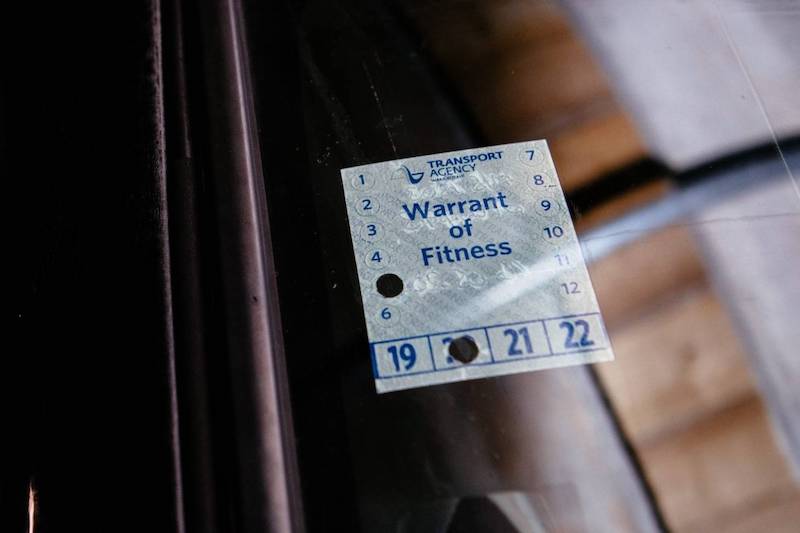Alright, so you’re probably wondering: “Am I really not covered by insurance if my car hasn’t got a WOF?” It’s a fair question, and one we get almost every week at Grimmer Motors – usually from someone nervously sipping a coffee while we check out their Corolla, Mazda Atenza, or sometimes a flash Mercedes wagon from over in Tamahere. So let’s break it down like we would if you were here in the shop with us.
What exactly is a WOF (Warrant of Fitness) anyway?
A WOF is basically a regular safety check required by NZTA, to make sure your car is still roadworthy. It’s not just a box ticking thing. Here in Hamilton, driving out to The Base, or down State Highway 3 to Te Awamutu, potholes are everywhere, and stop-start city traffic is rough on everything from your tyres to your seatbelts. The full list of what gets checked is here, if you want to have a nosey. Whether you’re rocking a Honda Fit or a Peugeot 308, if it’s registered for the road, it’ll need a valid WOF.

Example of a typical mechanic performing a WOF inspection.
Just because your car *passed* the WOF doesn’t mean you can chill for the next year either. You’re expected to keep it up to standard – so no ignoring those weird vibrations in the steering or letting brakes go metal-on-metal after the inspection. In fact, passing vehicles fail all the time just because someone let a bulb blow or the tread wore down from all those speed bumps on Rototuna’s back roads.
How long your WOF lasts depends on when your car was first registered – newer cars get a bit more leeway. Here’s the official breakdown of WOF timeframes, if you want the nitty gritty.
Am I Insured with No WOF?
Here’s where it gets a bit curly. Most insurers in NZ include “must have a valid WOF” as part of their terms. But in the real world, it’s not always black and white.
Why did the car fail its WOF?
We see this a lot – say Sarah from Cambridge brings in her older Suzuki Swift with a failed WOF because of dodgy brakes. If, heaven forbid, she crunches the Swift at the intersection of Peachgrove and Clyde and the cause was those brakes, her insurer will probably tell her she’s out of luck. The failure and the accident have to be linked.
What if the defect wasn’t the problem?
If you failed your WOF but the issue – like a worn wiper blade or a dodgy seatbelt buckle in the back seat – wasn’t related to the crash, you might still be okay insurance-wise. So if someone rear-ends your Nissan Note outside Chartwell and your WOF expired yesterday, there’s a chance they’ll pay out, as long as your lack of WOF didn’t play a role. Still, you’re technically not supposed to drive with no WOF unless you’re literally taking it for repair or inspection, and it’s still safely roadworthy.
Quick heads-up: It’s illegal to drive around Hamilton, or anywhere in NZ, with no valid WOF (unless you’re off to the shop to get it sorted and it’s still safe). The fines can really sting – especially after you’ve just forked out for rego and maybe a new battery (happens a lot after those freezing Hamilton winters).
Why bother keeping your WOF current?
We get it: Sometimes you’re skint and just hoping you’ll make it across to Morrinsville or Ngaruawahia and back without drama. But the WOF is about safety – for you, your passengers, and everyone else on the road. Those little checks can stop a dodgy tyre or loose suspension part turning into a disaster, especially with the way Hamilton’s roads punish your car in summer and winter.
Need a WOF Inspection in Hamilton?
If you’re worried about your insurance or just want a straight-up safety check, pop into Grimmer Motors. We don’t muck around – every WOF is done carefully, so you know you’re good to go whether you’re in a Kia Carnival, an old Toyota Caldina, or some quirky import from the UK. If your car fails, no worries – you can book in for a quick repair so you’re back on the road before you know it. Give us a bell or swing by to book your WOF Hamilton-wide!

